Parte 1
La felicidad y el bienestar
Beck, A.T.; Rush, A.J.; Shaw, B.F.; y Emery, G. (1979). Cognitive therapy of depression. New York, NY: Guilford Press.
Choy-Lye, C.; May-Ling Lee, J.; Ma, S; Malhotra, R. (2018). “Happy older people live longer”. En: Age and Ageing, vol. 47, n° 6, noviembre 2018, pp. 860–866, https://doi.org/10.1093/ageing/afy128
Csikszentmihalyi, M. (1996). Flow, una psicología de la felicidad. Barcelona: Kairós.
Kushlev, K.; Dunn, E. W.; y Lucas, R. E. (2015). “Higher Income Is Associated With Less Daily Sadness but not More Daily Happiness”. En: Social Psychological and Personality Science, 6(5), 483–489. https://doi.org/10.1177/1948550614568161
Seligman, M. (2011). Flourish: A Visionary New Understanding of Happiness and Well-being. New York: Free Press.
Fowler, J. H.; Christakis, N. A. (2008) “Dynamic spread of happiness in a large social network: longitudinal analysis over 20 years in the Framingham Heart Study”. En: BMJ; 2008, 337: a2338 doi:10.1136/bmj.a2338
Borgonovi, F. (2008) “Doing well by doing good. The relationship between formal volunteering and self-reported health and happiness”. En: Social Science & Medicine, vol. 66, n° 11, 2008, pp. 2321-2334, ISSN 0277-9536, https://doi.org/10.1016/j.socscimed.2008.01.011.
Valores y metas
Hayes, S. C.; Strosahl, K.; Wilson, K. G. (2011). Acceptance and Commitment Therapy, Second Edition: The Process and Practice of Mindful Change (2da ed.). Guilford Press.
Twohig, M. P.; y Levin, M. E. (2017). “Acceptance and Commitment Therapy as a Treatment for Anxiety and Depression: A Review”. En: The Psychiatric clinics of North America, 40 (4), 751–770. https://doi.org/10.1016/j.psc.2017.08.009
Motivación
American Psychological Association. (2019). Resolution on physical discipline of children by parents. Disponible en línea en: https://www.apa.org/news/press/releases/2019/02/physical-discipline
Moore, J. (2008). Conceptual Foundations of Radical Behaviorism. Sloan Publishing.
Wilson, S. D. y Hayes, S. (2018), Evolution and Contextual Behavioral Science: An Integrated Framework for Understanding, Predicting, and Influencing Human Behavior. New Harbinger Publications.
Parte 2
Inteligencia emocional
Ekman, Paul (ed.) (2006) Darwin and Facial Expression. A century of research in review. California: Malor Books.
Gangemi, A.; Dahò, M.; y Mancini, F. (2021). “Emotional Reasoning and Psychopathology”. En: Brain sciences, 11(4), 471. https://doi.org/10.3390/brainsci11040471
LeDoux J. E. (2012). “Evolution of human emotion: a view through fear”. En: Progress in brain research, 195, 431–442. https://doi.org/10.1016/B978-0-444-53860-4.00021-0
Nummenmaa, L.; Glerean, E; Hari, R.; y Hietanen, J. K. (2013) “Bodily maps of emotions” https://doi.org/10.1073/pnas.1321664111 En: PNAS, vol. 111, n° 2.
O’ Sullivan, M. y Ekman, P. “Facial Expression Recognition and Emotional Intelligence”. En: Leeland, Katherine (ed.) (2008). Face Recognition: New Research. Nueva York: Nova Science Publishers.
Rodríguez Biglieri, R; Vetere, G. (comp.) (2011) Manual de terapia cognitiva conductual de trastornos de ansiedad. Buenos Aires: Editorial Polemos.
Miedo y ansiedad
Asociación Americana de Psiquiatría. (2013). Manual diagnóstico y estadístico de los trastornos mentales (5ª ed.). Editorial Médica Panamericana.
Barlow, D. H.; Craske, M. G.; Cerny, J. A., y Klosko, J. S. (1989). “Behavioral treatment of panic disorder”. En: Behavior therapy, 20(2), 261-282.
Clark, D. A.; y Beck, A. T. (2012). Terapia Cognitiva para los Trastornos de Ansiedad. Barcelona: Desclée De Brouwer.
Foa, E. B.; y Kozak, M. J. (1986). “Emotional processing of fear: exposure to corrective information”. En: Psychological bulletin, 99(1), 20–35.
Kaczkurkin, A. N.; y Foa, E. B. (2015). “Cognitive-behavioral therapy for anxiety disorders: an update on the empirical evidence”. En: Dialogues in clinical neuroscience, 17(3), 337–346. https://doi.org/10.31887/DCNS.2015.17.3/akaczkurkin
Mobbs, D.; Petrovic, P.; Marchant, J. L.; Hassabis, D.; Weiskopf, N.; Seymour, B.; Dolan, R. J.; y Frith, C. D. (2007). “When fear is near: threat imminence elicits prefrontal-periaqueductal gray shifts in humans”. En: Science, 317(5841), 1079–1083. https://doi.org/10.1126/science.1144298
Rodríguez Biglieri, R; Vetere, G. (comp.) (2011) Manual de terapia cognitiva conductual de trastornos de ansiedad. Buenos Aires: Editorial Polemos.
Vujcic, M.; Tomicevic-Dubljevic, J.; Grbic, M.; Lecic-Tosevski, D. Vukovic, O.; y Toskovic, O. (2017). “Nature based solution for improving mental health and well-being in urban areas”. En: Environmental research, 158, 385–392. https://doi.org/10.1016/j.envres.2017.06.030
Tristeza y depresión
Goleman, D. (2003) Inteligencia emocional. Penguin Random House.
Bandura, A. (2012). “On the functional properties of perceived self-efficacy revisited”. En: Journal of Management, 38(1), 9-44.
Nolen-Hoeksema, S. (2000). “The role of rumination in depressive disorders and mixed anxiety/depressive symptoms”. En: Journal of Abnormal Psychology, 109(3), 504–511.
Trick, L.; Watkins, E.; Windeatt, S.; y Dickens, C. (2016). “The association of perseverative negative thinking with depression, anxiety and emotional distress in people with long term conditions: A systematic review”. En: Journal of psychosomatic research, 91, 89–101. https://doi.org/10.1016/j.jpsychores.2016.11.004
Watkins, E. R., y Roberts, H. (2020). “Reflecting on rumination: Consequences, causes, mechanisms and treatment of rumination”. En: Behaviour research and therapy, 127, 103573. https://doi.org/10.1016/j.brat.2020.103573
Watkins E. R. (2008). “Constructive and unconstructive repetitive thought”. En: Psychological bulletin, 134(2), 163–206. https://doi.org/10.1037/0033-2909.134.2.163
Wegner, D. M.; y Zanakos, S. (1994). “Chronic thought suppression”. En: Journal of personality, 62(4), 616–640. https://doi.org/10.1111/j.1467-6494.1994.tb00311.x
Yolba Smit, Huibers, M.; Ioannidis, J.; van Dyck, R; van Tilburg, W.; Arntz, A. (2012). “The effectiveness of long-term psychoanalytic psychotherapy—A meta-analysis of randomized controlled trials”. En: Clinical Psychology Review, vol. 32, n° 2, 2012, pp. 81-92, ISSN 0272-7358, https://doi.org/10.1016/j.cpr.2011.11.003.
Enojo
Alia-Klein, N.; Gan, G.; Gilam, G.; Bezek, J.; Bruno, A.; Denson, T. F.; Hendler, T.; Lowe, L.; Mariotti, V.; Muscatello, M. R.; Palumbo, S.; Pellegrini, S.; Pietrini, P.; Rizzo, A.; y Verona, E. (2020). “The feeling of anger: From brain networks to linguistic expressions”. En: Neuroscience and biobehavioral reviews, 108, 480–497. https://doi.org/10.1016/j.neubiorev.2019.12.002
Bushman, B. (2002) “Does Venting Anger Feed or Extinguish the Flame? Catharsis, Rumination, Distraction, Anger, and Aggressive Responding”. En: Personality and Social Psychology Bulletin, vol. 28, n° 6, pp. 724-731
Linehan, M. (2015) DBT Skills Training Manual. Second. Nueva York: The Guilford Press.
von Salisch, M.; y Saarni, C. (2011). “The development and function of anger in childhood and adolescence”. En: Pahlavan, F. (ed.), Multiple facets of anger: Getting mad or restoring justice? (pp. 81–101). Nova Science Publishers.
Weir, K. (2017). “Forgiveness can improve mental and physical health. Research shows how to get there”. En: Monitor on Psychology, 48, (1).
Vergüenza
Linehan, M. (2015) DBT Skills Training Manual. Second. Nueva York: The Guilford Press.
Watkins, L.; Sprang Kelsey R.; Rothbaum, B. O. (2018)."Treating PTSD: A Review of Evidence-Based Psychotherapy Interventions". En: Frontiers in Behavioral Neuroscience, vol. 12, DOI=10.3389/fnbeh.2018.00258, ISSN=1662-5153.
Culpa
Linehan, M. (2015) DBT Skills Training Manual. Second. Nueva York: The Guilford Press.
Amor
Fraley, C. R.; Roisman, G. (2019) “The development of adult attachment styles: four lessons”, En: Current Opinion in Psychology, vol. 25, 2019, pp. 26-30, ISSN 2352-250X, https://doi.org/10.1016/j.copsyc.2018.02.008.
Feldman, R. (2012) “Oxytocin and social affiliation in humans”, En: Hormones and Behavior, vol. 61, n° 3, 2012, pp. 380-391, ISSN 0018-506X, https://doi.org/10.1016/j.yhbeh.2012.01.008.
Fisher, Helen (1994). Anatomía del amor. Barcelona: Anagrama.
Hoffman, E. A.; y Rowe, T. B. (2018). “Jurassic stem-mammal perinates and the origin of mammalian reproduction and growth”. En: Nature, 561(7721), 104–108. https://doi.org/10.1038/s41586-018-0441-3
Rilling J. K.; Young, L. J. (2014). “The biology of mammalian parenting and its effect on offspring social development”. En: Science. Agosto 2014. vol. 345, n°6198, pp. 771-776. DOI: 10.1126/science.1252723
Simpson, J. A.; Rholes, W. (2017). “Adult attachment, stress, and romantic relationships”. En: Current Opinion in Psychology, vol. 13, 2017, pp. 19-24, ISSN 2352-250X, https://doi.org/10.1016/j.copsyc.2016.04.006.
Parte 3
Efectividad interpersonal
Leikas, S.; y Ilmarinen, V.J. (2017). “Happy Now, Tired Later? Extraverted and Conscientious Behavior Are Related to Immediate Mood Gains, but to Later Fatigue”. En: J Pers, 85: 603-615. https://doi.org/10.1111/jopy.12264
Linehan, M. (2015) DBT Skills Training Manual. Second. Nueva York: The Guilford Press.
El camino del medio
Linehan, M. (2015) DBT Skills Training Manual. Second. Nueva York: The Guilford Press.
Matos, M.; Steindl, S.R. (2020) “You are already all you need to be: A case illustration of compassion-focused therapy for shame and perfectionism”. En: J Clin Psychol. 2020; 76: 2079– 2096. https://doi.org/10.1002/jclp.23055
Riley, C.; Lee, M.; Cooper, Z.; Fairburn, C. G.; y Shafran, R. (2007). “A randomised controlled trial of cognitive-behaviour therapy for clinical perfectionism: a preliminary study”. En: Behaviour research and therapy, 45(9), 2221–2231. https://doi.org/10.1016/j.brat.2006.12.003
Rozental, A. (2020). “Beyond perfect? A case illustration of working with perfectionism using cognitive behavior therapy”. En: Journal of Clinical Psychology, vol.76, n° 11, noviembre 2020, pp. 2041-2054, https://doi.org/10.1002/jclp.23039
Tang, YY.; Hölzel, B.; y Posner, M. (2015). “The neuroscience of mindfulness meditation”. En: Nat Rev Neurosci 16, 213–225. https://doi.org/10.1038/nrn3916






